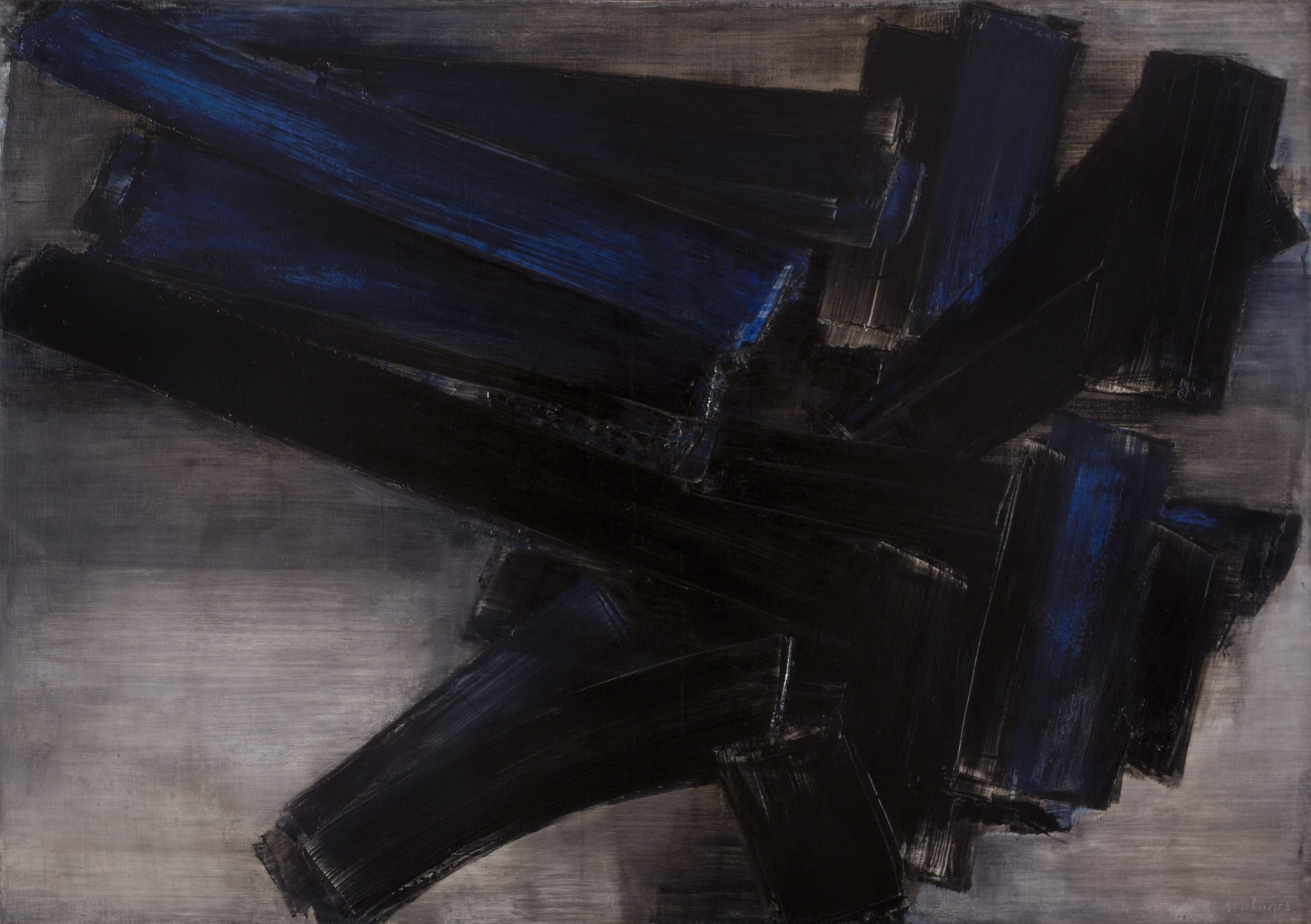
What You Need to Know: Marking the gallery’s third exhibition dedicated to the late artist’s work, Galerie Pascal Lansberg presents “Pierre Soulages. 1950s,” a tightly-edited look at the decade from his early career. The previous two shows were produced during the artist’s lifetime, in 2009 and 2016, and speak to the gallery’s specialization and championing of the New School of Paris, and, more specifically, the life and work of Soulages. The artist’s work from the 1950s significantly predate his seminal Outrenoir (Beyond Black) period begun in the late 1970s, marking them as particularly desirable by collectors. On view through November 16, 2024, the show includes roughly a dozen works, including large-scale paintings, works on paper, and several pieces from private collections that have not before been on view or available to the public. “The 1950s mark a pivotal era for Soulages, where his meticulous gestures and striking chiaroscuro redefine the very essence of painting,” noted the gallery in a statement. “This groundbreaking exhibition unveils hidden gems of the period, showcasing Soulages’ genius in ways that are sure to astonish both collectors and the general public.”
Pierre Soulages, Peinture 162 x 114cm, 29 août 1958 (1958). Courtesy of Galerie Pascal Lansberg, Paris.
About the Artist: Pierre Soulages (1919–2022) is described by Galerie Pascal Lansberg as “without question France’s favorite artist,” and is colloquially referred to as “the painter of black.” Working across painting, printmaking, and sculpture, early influences included artists like Paul Cézanne and Pablo Picasso, but his work and practice reflected a much more experimental, avant-garde slant—contributing to him dropping out of the École nationale supérieure des beaux-arts, as he was dissatisfied with the traditional artmaking approaches being taught. Following World War II, he returned to his studies at the Fine Arts School of Montpellier, and ultimately began working in total abstraction, with black as the primary color. He garnered acclaim in both Europe and the United States, showing at the 1954 Venice Biennale as well as having his work exhibited at the influential Betty Parsons Gallery and Samuel Kootz in New York in the late 1940s and early 1950s. Continuing to accrue worldwide fame, he was the subject of a major retrospective at the Pompidou Centre in 2009, and in 2014 the Musée Soulages, dedicated to his work, opened in his hometown of Rodez.
Pierre Soulages, Peinture 104.5 x 75.5 cm, 1952 (1952). Courtesy of Galerie Pascal Lansberg, Paris.
Why We Like It: As the gallery notes, Soulages’ Outrenoir period is arguably his most well-known, however, within the present exhibition, the artist’s earlier work provides invaluable insight into his artistic trajectory and distinctive style. For those familiar with Soulages’ oeuvre, the show manages to still offer a unique sense of discovery, not only from the inclusion of several previously unexhibited works but by the collection together showcasing his practice before he reached international renown. While much of the artist’s work is recognized for its decisive and clear composition and brushstrokes, here, there is a sense of exploration and experimentation, making visible how he may have been testing how the effect of his pigment’s viscosity, or how opacity and transparency, line and shape affect the overall work. “Soulages. 1950s” presents an unparalleled opportunity to revisit and reassess the artist’s work from a particular vantage point, and, in light of his recent passing, a testament to his ongoing relevance.
Pierre Soulages, Peinture 92 x 65 cm, 12 août 1959 (1959). Courtesy of Galerie Pascal Lansberg, Paris.
“Pierre Soulages. 1950s” is on view at Galerie Pascal Lansberg, Paris, through November 16, 2024.